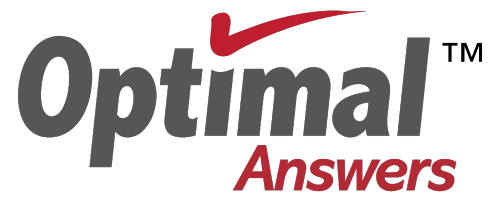[vc_row gap=”15″][vc_column width=”2/3″][vc_column_text]This section discusses each of the Yield Optimization System models and presents sample reports associated with each model. Executing the more comprehensive yield analyses incorporates the advanced formulation modules as well as the cutting module. Additionally, all other formulation modules can be configured into your Yield Optimization system. Therefore, all yield and formulation modules are briefly discussed here. Each model is presented within its own web page. The pages may be accessed by clicking the links below or clicking on the appropriate menu pad.
All Optimal models — from the simplest to the most complex — benefit from the features of the Optimal model environment:
- Powerful and efficient SQL database – the industry standard
- All modules can share the same database as they work with the same data tables
- Intuitive and helpful user interface
- Efficient optimization and modeling software
- Convenient data exchange with spreadsheets and other databases
- Rich set of solution report
[/vc_column_text][/vc_column][vc_column width=”1/3″][vc_column_text]
 [/vc_column_text][/vc_column][/vc_row][vc_row][vc_column][vc_column_text]The Optimal Yield Optimization System includes the following model types:
[/vc_column_text][/vc_column][/vc_row][vc_row][vc_column][vc_column_text]The Optimal Yield Optimization System includes the following model types:
- YIELD OPTIMIZATION combines both cutting and formulation to produce products to fill customer orders and market demands.
- SINGLE PRODUCT generates the minimum cost recipe for a single formula while complying with all quality and regulatory requirements.
- SEQUENTIAL SINGLE PRODUCT formulates a series of single product formulas in sequence, relieving inventory used by each batch.
- MULTI-PRODUCT optimally allocates materials to multiple formulas simultaneously considering limited availability and forced-use ingredients.
- PROCUREMENT PLANNING considers multiple suppliers with unique materials costs and compositions, truckload quantities, delivery dates, expiration dates, and shipping costs to optimally formulate products over multiple days.
- PRODUCTION PLANNING optimally allocates materials inventory to production periods considering production requirements by product by period and the availability and expiration dates of materials.
- LOT ALLOCATION optimally sequences individual lots of materials to forthcoming batches based on lot available or expiration date.
- MULTI-LEVEL – Simultaneously optimizes a formula and the dependent formulas that produce items used in the formula
Each of these models represents an opportunity to better manage materials and achieve savings. Please review the information and reports from each of the Optimal optimization models (Single Product, Multi Product, Procurement Planning, Production Planning, Lot Allocation, Multi Site Procurement, etc.). This information reflects the capability of the Yield Optimization System to enable users to generate savings in solving any of these yield and formulation problems.
Optimal has provided a basic set of reports. You have access to all of the solution data, database entities, and SQL reporting services; you can add other reports that you find necessary. There are additional features for reviewing model results:
- Formatted text reports are available immediately after each model run. This gives the user a way to quickly review model results.
- SQL solution tables contain results from all model cases. The tables are organized so that the contents are easily understood. Data for all cases remain in these tables until the case (run number) is deleted. This is the source for solution data for user created reports.
[/vc_column_text][/vc_column][/vc_row]
